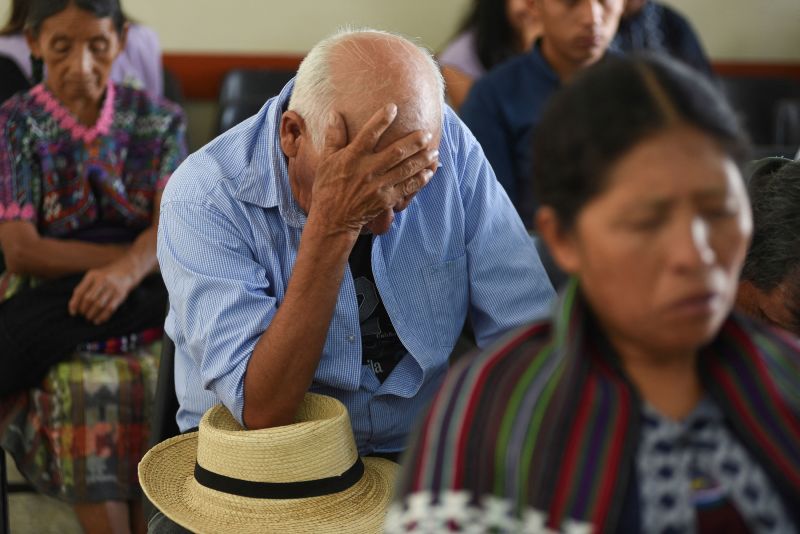Body:
The massive genocide trial in Guatemala, which has recently resumed after a protracted break, has reopened painful memories of a brutal era in the nation’s history. The trial has stirred deep emotions and palpable tension, especially among the indigenous Maya Ixil community, who were the primary victims of the horrific acts that took place during the country’s 36-year civil war from 1960 to 1996, also known as La Violencia.
The trial pertains to a genocide that claimed the lives of approximately 200,000 individuals and led to the displacement of a striking number of indigenous communities from their land. It was during this period, specifically from 1981 to 1983, under the dictatorship of General Efraín Ríos Montt, that the Maya Ixil community was subjected to an unrestrained spree of violence. It encompassed systematic mass murder, the destruction of numerous villages, and widespread sexual assault against women.
As the trial continues, it brings to the public eye the unimaginable atrocities committed against the Maya Ixil community. The horrors that were once shrouded in the dense forests of the highlands around Nebaj are now being laid bare for the world to see, through the recollections of tearful survivors and the stark black and white images presented in court.
Despite the inevitable reopening of old wounds, the trial serves as a vital platform for the indigenous community to voice their long-held suffering and demand justice. Victims of the genocide, now mostly the older generation, provide chilling testimonies. Their harrowing narratives tell tales of loved ones massacred, homes burnt to the ground, and a way of life utterly destroyed – all aimed at ethnically cleansing Guatemala of its indigenous populace.
Nonetheless, the trial also highlights the profound resilience of the Maya Ixil people. Amid such carnage and chaos, they managed to sustain their cultural heritage and traditions. The sight of women in their community’s traditional attire, painstakingly woven as symbols of their identity, underscores this indomitable spirit.
Beyond personal testimonies, the trial is unusually dependent on forensic science, making it one of the largest in the world to rely so heavily on this discipline. The exhumation of mass graves and analysis of physical remains from the massacre sites has provided concrete evidence of the genocide, thus helping the survivors’ narratives gain traction in the court.
The trial, which spans four decades after the genocide, is a vivid illustration of the sluggish pace of justice in Guatemala, a country blighted by chronic impunity. Yet, it offers a glimmer of hope for survivors and relatives of victims who have waited years for their voices to be heard and for perpetrators to be held accountable.
To perceive the trial in its appropriate context, it is essential to address the social and political fervor in Guatemala. Controversy remains, as there are factions within Guatemalan society that deny the genocide, citing it as a feverish vision of left-wing propaganda. Yet, it is increasingly evident that the genocide trial in Guatemala is seen as a fundamental step toward reconciliation, understanding, and, ultimately, healing for a nation still reeling from its violent past.
The court’s verdict remains a matter of bated breath for the entire country – whether it will bring the much-needed closure to the victims and usher in a new era of accountability or whether it will plunge the nation further into the chasm of discord remains to be seen. Despite these uncertainties, the trial is undeniably bringing Guatemala’s hidden history of violence, and resistance, into global limelight.




